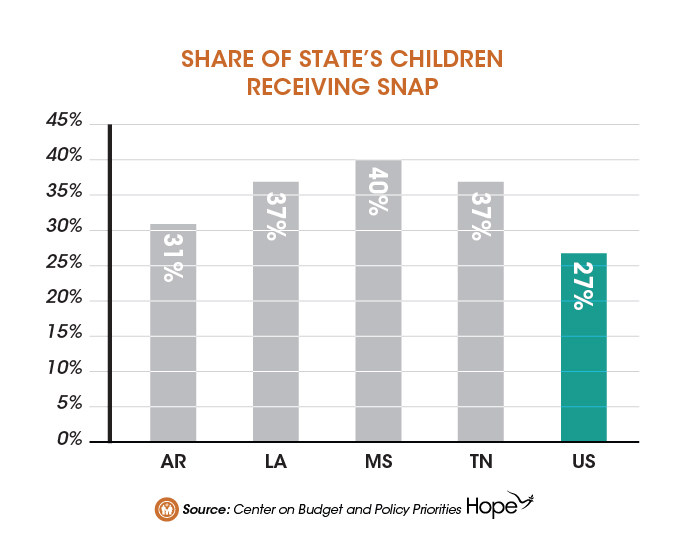SNAP Works for Children in the Mid South
October 14th, 2016
The Supplemental Nutrition Assistance (SNAP) program helps Mid South (Arkansas, Louisiana, Mississippi and Tennessee) families put food on the table. But we know now that it accomplishes much more than that.
Research shows that SNAP, formerly known as Food Stamps, can ward against the long-term effects on children experiencing poverty and other events that can take a toll on their well-being as adults. As a new Center on Budget and Policy Priorities report finds, SNAP helps form a strong foundation of health and well-being for low-income children by lifting millions of families out of poverty, improving food security, and helping improve health and academic achievement with long-lasting consequences.
SNAP delivers more nutrition assistance to low-income children than any other. In 2016, SNAP will help about 20 million children each month – about one in four children in the United States – while providing about $30 billion in nutrition benefits for children over the course of the year. In the Mid South, SNAP helps about 1.5 million children each month, or about one in four (36 percent) Mid South children. See Chart.
SNAP’s benefits are modest, but they are well-targeted to the families that need them most. While participating families with children in the Mid South receive an average of $400 each month, those in deep poverty ($12,150 for a family of four) get $502.
SNAP helps to give thousands of children in the Mid South the foundation they need to succeed and helps lift children out of poverty. Efforts to reform or enhance it should build on its effectiveness in protecting the well-being of our children — and those nationwide — and preserve the essential program features that contribute to that success.
Source:
Center on Budget and Policy Priorities. (September 2016). SNAP works for America’s children. Retrieved from http://www.cbpp.org/research/food-assistance/snap-works-for-americas-children







